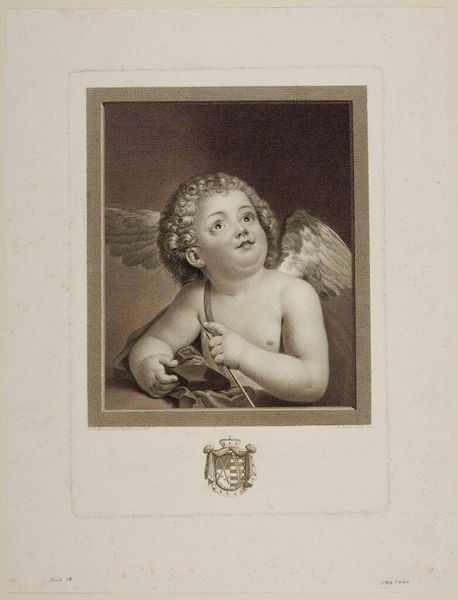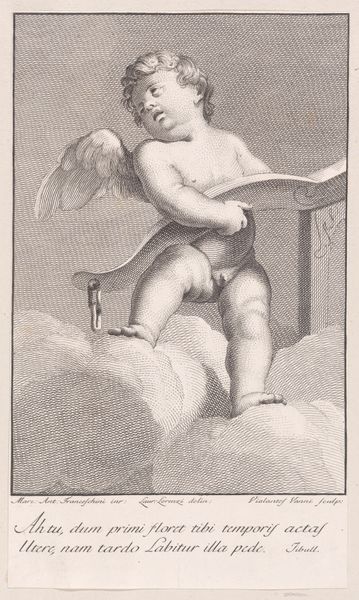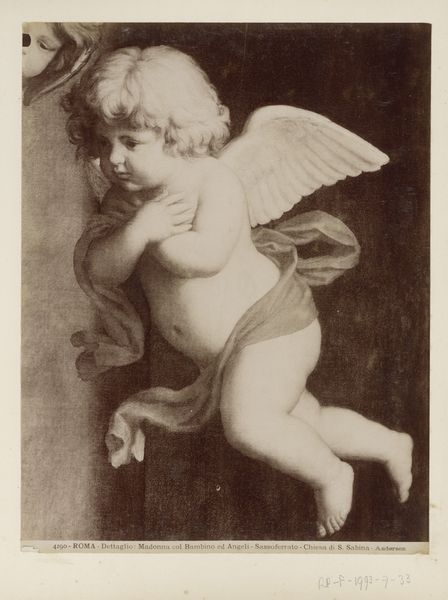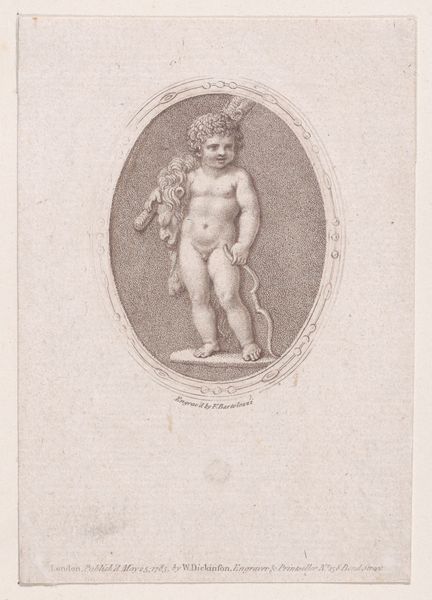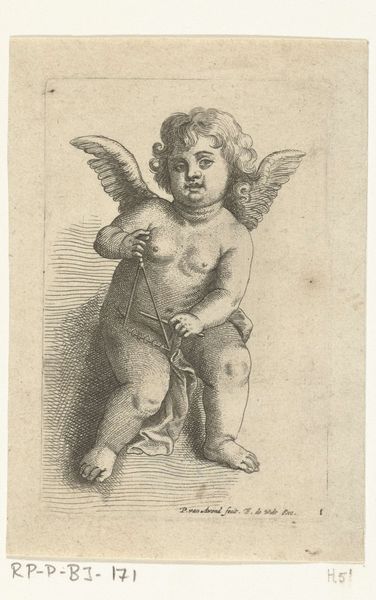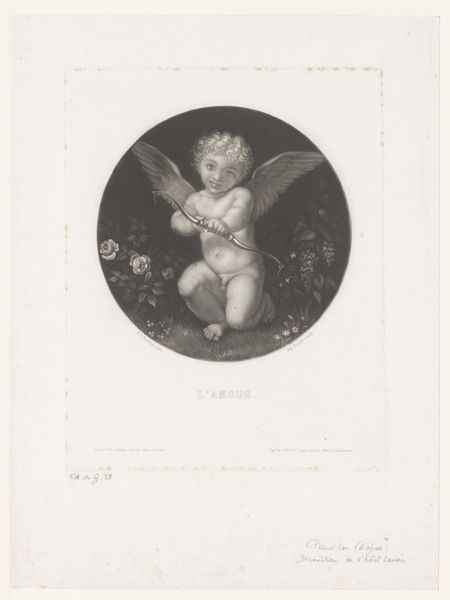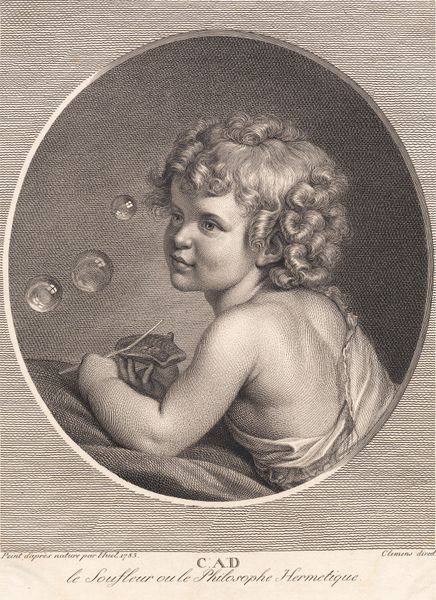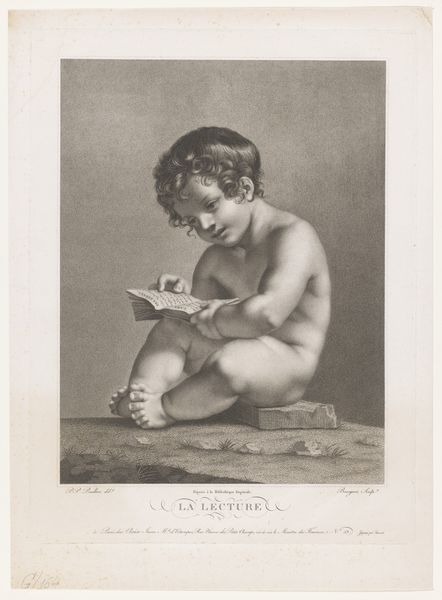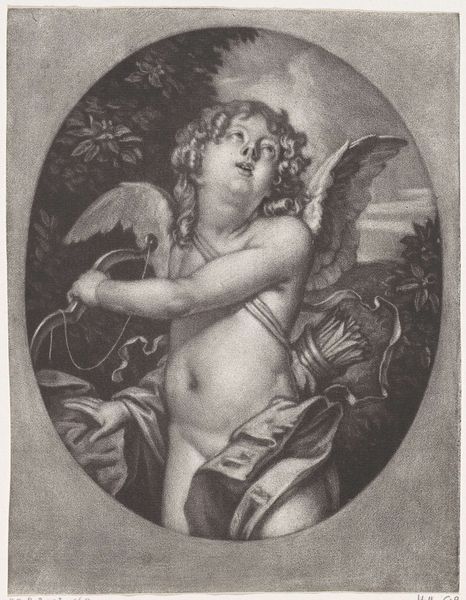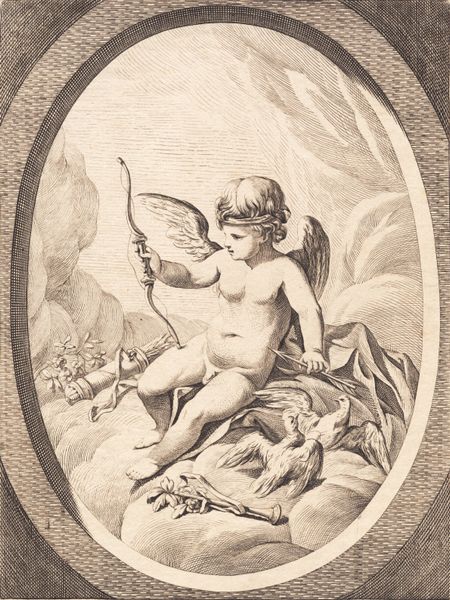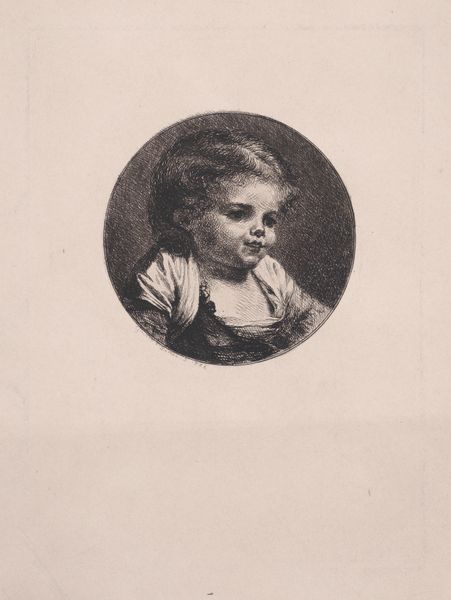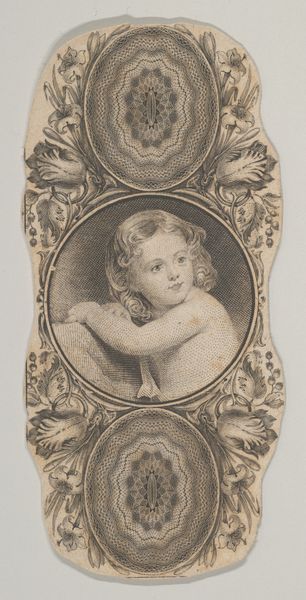
drawing, print, engraving
#
portrait
#
drawing
#
neoclacissism
#
allegory
# print
#
cupid
#
engraving
Dimensions: Plate: 11 1/4 × 7 15/16 in. (28.5 × 20.1 cm) Sheet: 11 7/8 × 8 1/2 in. (30.2 × 21.6 cm)
Copyright: Public Domain
Curator: At first glance, this engraving strikes me as delicate and rather melancholic. The subtle gradations of tone give it a quiet intensity. Editor: Here we have "Cupid feeling the point of an arrow," created around 1790 by Johann Friedrich Bause. As the title indicates, it depicts Cupid himself testing the sharpness of his infamous arrow. What might not be immediately apparent is how this imagery relates to the societal obsession with love and its potent influence, particularly during the Neoclassical period. Curator: Indeed, we see Cupid embodied in a classical style, framed, almost as if caught within the confines of social expectations. I can see Bause's technique perfectly capturing Cupid’s thoughtful expression, suggesting love is not always a joyous or innocent emotion, but perhaps also laced with pain or introspection. Editor: You're absolutely right, it’s more nuanced than a simple depiction of love's joys. The texture is especially intriguing—look closely and notice the delicate lines Bause uses to define form, a style so characteristic of Neoclassical prints meant to emulate the antique. This creates a kind of visual purity but also emphasizes the emotional complexities inherent in the allegorical figure. Curator: This form contributes to the understanding and consumption of art and ideas at the time, especially among the educated elite who collected such prints. The widespread dissemination of Cupid’s image served as a potent reminder of love's power. Editor: It makes you ponder the cultural importance of visual allegory. This work acts as a symbol, encapsulating larger cultural beliefs and anxieties around love, desire, and its representation in art. Bause does it subtly through carefully rendered forms. Curator: The act of disseminating these beliefs through the act of creation makes us think more deeply about love as an active, rather than passive emotion. Editor: By understanding these artistic choices, we gain not just an appreciation for Bause’s skill but a deeper understanding of the social, political, and cultural role art plays in shaping society’s perceptions and the public imaginary.
Comments
No comments
Be the first to comment and join the conversation on the ultimate creative platform.
